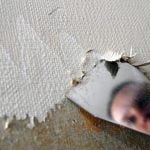Are you wondering how to improve indoor air quality at home? Indoor air quality refers to the condition of the air within and around buildings, especially as it relates to the health and comfort of occupants. It is essential to understand the importance of maintaining good indoor air quality in order to create a healthy living environment for you and your family.
Indoor air quality can be affected by a variety of factors, including pollutants from both indoor and outdoor sources. It’s crucial to identify these sources in order to effectively address and improve indoor air quality. From household cleaning products to pet dander, being aware of common indoor air pollutants is the first step in creating cleaner, healthier indoor air.
Poor indoor air quality can have serious health effects, ranging from respiratory issues to more severe conditions. Understanding the dangers associated with poor indoor air quality is vital for taking proactive measures to ensure that you and your loved ones are breathing clean, healthy air.
Common Indoor Air Pollutants
Indoor air pollutants can come from a variety of sources within the home, and it’s important to be able to identify and understand these sources in order to effectively improve indoor air quality. Here are some common indoor air pollutants and where they come from:
1. Tobacco Smoke: Smoking indoors can release harmful chemicals and particles that can linger in the air for long periods of time.
2. Volatile Organic Compounds (VOCs): Commonly found in household products such as paints, varnishes, cleaning supplies, and even some furniture. VOCs can off-gas into the air and contribute to poor indoor air quality.
3. Mold and Mildew: These fungi thrive in damp or humid environments, particularly in areas with poor ventilation such as bathrooms, basements, and kitchens.
4. Pet Dander: Pets can shed dander that contains allergens and other particles that can contribute to poor indoor air quality, especially for those with pet allergies.
5. Dust and Dust Mites: Dust mites thrive in dust, carpeting, upholstery, and bedding – all of which are common in many households.
By understanding these common sources of indoor air pollutants, you can take steps to minimize their impact on your home’s air quality. This could include implementing a range of measures such as reducing smoking indoors, utilizing low-VOC products, maintaining proper humidity levels to deter mold growth, regular cleaning to reduce dust accumulation, and investing in an air purifier with a HEPA filter to capture pet dander.
Regular HVAC maintenance is also vital for ensuring clean airflow throughout your living space.
Remember that taking these steps will not only improve the overall health of your home environment but also significantly reduce health risks associated with exposure to these common indoor pollutants.
Health Effects of Poor Indoor Air Quality
Poor indoor air quality can have significant adverse effects on your health and well-being. From respiratory issues to more serious long-term health complications, it’s important to understand the dangers of breathing in polluted air within your home. Here are some of the potential health effects of poor indoor air quality:
- Respiratory Issues: Indoor air pollutants such as dust, pet dander, and mold can trigger or worsen existing respiratory conditions like asthma and bronchitis.
- Allergies: Poor indoor air quality can lead to increased allergy symptoms, including sneezing, coughing, and itchy eyes.
- Cardiovascular Problems: Long-term exposure to indoor pollutants has been linked to an increased risk of heart disease and other cardiovascular issues.
- Headaches and Fatigue: Breathing in contaminated air can also lead to frequent headaches, fatigue, and difficulty concentrating.
- Compromised Immune System: Continued exposure to indoor air pollutants can weaken the immune system, making you more susceptible to illnesses.
To improve indoor air quality at home and reduce the risk of these health issues, it’s important to take proactive measures.
Tips for Improving Indoor Air Quality
Here are some simple changes you can make to create a healthier indoor environment for you and your family:
- Keep your home clean by regularly dusting, vacuuming, and mopping floors.
- Control humidity levels to prevent mold growth by using dehumidifiers in damp areas like basements and bathrooms.
- Avoid smoking indoors or allowing others to smoke inside your home.
By implementing these tips for improving indoor air quality at home, you can minimize the health risks associated with breathing in polluted air.
Tips for Improving Indoor Air Quality
Improving indoor air quality at home doesn’t have to be a daunting task. There are several simple changes that you can make to ensure that the air inside your home is clean and healthy for you and your family. One of the most basic and effective ways to improve indoor air quality is by keeping your home clean.
Regular cleaning can help eliminate dust, pet dander, and other allergens that can pollute the air inside your home. Additionally, using natural cleaning products can also help reduce the number of harmful chemicals in the air.
Another important tip for improving indoor air quality is to reduce humidity levels in your home. High humidity can lead to mold growth, which can release spores into the air and cause respiratory issues. Using a dehumidifier or ensuring proper ventilation in areas like bathrooms and kitchens can help control humidity levels and prevent mold from developing.
Furthermore, creating a smoke-free environment is crucial for maintaining good indoor air quality. Smoking indoors can significantly decrease the air quality in your home, leading to various health problems for you and your family members. Encouraging smokers to smoke outside or quitting altogether can greatly improve the overall air quality indoors.
| Tips for Improving Indoor Air Quality | Simple Changes for Better Air |
|---|---|
| Regular cleaning | Using natural cleaning products |
| Reducing humidity levels | Creating a smoke-free environment |
HVAC Maintenance
Regular HVAC Inspections and Cleaning
One of the most important steps in maintaining good indoor air quality at home is to ensure that your HVAC system is functioning properly. Regular inspections and cleanings of your heating, ventilation, and air conditioning system can help prevent the circulation of pollutants such as dust, mold, and bacteria. It is recommended to have a professional HVAC technician conduct an annual maintenance check to keep your system running efficiently.
Changing Air Filters
Another crucial aspect of HVAC maintenance is changing the air filters on a regular basis. Dirty air filters can reduce the efficiency of your system and allow pollutants to circulate throughout your home. It is recommended to change your air filters every 1-3 months, depending on factors such as pets, allergens, and overall air quality.
Proper Ventilation Management
In addition to keeping your HVAC system well-maintained, it’s also important to manage the ventilation in your home effectively. Proper ventilation helps to reduce the buildup of indoor air pollutants by allowing fresh outdoor air to replace stale indoor air. Opening windows when weather permits and using exhaust fans in areas like the kitchen and bathrooms can greatly improve indoor air quality.
By following these HVAC maintenance tips, you can significantly improve indoor air quality at home and create a healthier living environment for you and your family. Regular inspections, changing air filters, and managing ventilation are all key factors in ensuring that your HVAC system is promoting clean, fresh air circulation throughout your home.
Using Air Purifiers and Filters
When it comes to improving indoor air quality at home, one effective way to do so is by using air purifiers and filters. These devices help to remove airborne particles and pollutants, making the air you breathe cleaner and safer for you and your family.
But with a variety of options available in the market, it can be overwhelming to choose the right one for your specific needs. Here’s a guide to help you make an informed decision when selecting an air purifier or filter for your home.
First, consider the size of the area that needs to be purified. Air purifiers are designed for specific room sizes, so it’s important to choose one that is appropriate for the square footage of the room where it will be used.
Additionally, consider the Clean Air Delivery Rate (CADR) of the device, which measures how quickly it can clean the air in a specific room size. Look for an air purifier with a CADR rating that matches or exceeds the size of the room where it will be placed.
Another important factor to consider is the type of filtration system used in the air purifier. High-efficiency particulate air (HEPA) filters are known for their effectiveness in capturing airborne particles, allergens, and pollutants. Consider an air purifier with a HEPA filter or a combination of filtration technologies such as activated carbon filters for removing odors and gases.
Lastly, take into account additional features that may be beneficial for your specific needs such as programmable settings, noise level, and energy efficiency. By considering these factors when choosing an air purifier or filter, you can effectively improve indoor air quality at home and create a healthier living environment for you and your loved ones.
| Factors to Consider | Considerations |
|---|---|
| Room Size | Choose an appropriate size based on square footage |
| Filtration System | Look for HEPA filters or combination filtration technologies |
| Additional Features | Consider programmable settings, noise level, and energy efficiency |
Ventilation Strategies
Opening Windows and Doors
One of the simplest and most effective ways to improve indoor air quality at home is by allowing fresh air to circulate. By opening windows and doors, you can reduce the concentration of indoor air pollutants and bring in clean, outdoor air.
This is especially important when performing activities that can release pollutants into the air, such as cooking or cleaning. Additionally, allowing cross-ventilation by opening windows on opposite sides of a room can help promote airflow and reduce stagnant air.
Using Exhaust Fans
Another key strategy for improving indoor air quality is the use of exhaust fans in areas prone to high humidity or pollutant accumulation, such as bathrooms, kitchens, and laundry rooms. These fans help remove moisture and airborne contaminants from the air, preventing mold growth and reducing the impact of indoor pollutants on your health.
Mechanical Ventilation Systems
For homes with inadequate natural ventilation, mechanical ventilation systems offer a more controlled approach to ensuring proper airflow. These systems use fans and ducts to exhaust stale air from inside the home while bringing in fresh outdoor air. Some modern mechanical ventilation systems also include heat recovery technology to pre-condition incoming air for improved energy efficiency.
By implementing these ventilation strategies, you can significantly improve indoor air quality at home and create a healthier living environment for you and your family. Whether through simple actions like opening windows or more complex solutions like installing mechanical ventilation systems, prioritizing good airflow is essential in maintaining clean indoor air.
Natural Ways to Improve Indoor Air Quality
If you are looking for natural ways to improve indoor air quality at home, consider incorporating plants, essential oils, and DIY solutions into your living space. These natural methods can help reduce the levels of indoor air pollutants and create a healthier environment for you and your family.
Plants are not only aesthetically pleasing but also have the ability to purify the air. Certain houseplants, such as spider plants, peace lilies, and snake plants, are known for their air-purifying properties. They can help remove common indoor air pollutants like benzene, formaldehyde, and trichloroethylene. By placing these plants strategically around your home, you can actively improve the quality of the air you breathe indoors.
Essential oils are another natural way to freshen and purify the air in your home. Aromatherapy using essential oils like tea tree oil, eucalyptus oil, or lavender oil can help reduce airborne bacteria and mold spores.
You can use essential oils in a diffuser or add a few drops to a spray bottle with water to create your own homemade air freshener. Additionally, many essential oils have calming or invigorating effects that can contribute to a more comfortable and relaxed indoor environment.
In addition to plants and essential oils, there are various do-it-yourself solutions that can help improve indoor air quality at home. For example, creating a non-toxic cleaning solution using ingredients like vinegar, baking soda, and lemon can help reduce the amount of harmful chemicals released into the air. Implementing these natural remedies in your home can be a simple yet effective way to enhance indoor air quality without relying on synthetic products.
The Role of Cleanliness
Keeping your home environment clean is essential for improving indoor air quality. Dust, dirt, and clutter can contribute to poor air quality by trapping pollutants and allergens. Regular cleaning habits can significantly reduce the level of indoor air pollutants and help create a healthier living environment for you and your family.
Start by establishing a cleaning routine that includes dusting, vacuuming, and mopping to remove dirt and dust particles from your home. Pay special attention to areas where dust tends to accumulate, such as shelves, window sills, and baseboards. Additionally, wash bedding, curtains, and other fabrics regularly to reduce the presence of dust mites and other allergens.
In addition to regular cleaning, it’s important to minimize the use of harsh chemicals in your home. Many cleaning products contain volatile organic compounds (VOCs) that can contribute to poor indoor air quality. Instead, opt for natural or eco-friendly cleaning solutions that are less harmful to the air you breathe. By prioritizing cleanliness and using non-toxic cleaning products, you can effectively reduce indoor air pollutants and create a healthier home environment for everyone.
Lastly, maintaining a clutter-free home is key to improving indoor air quality. Clutter can collect dust and impede proper airflow within your living space. By keeping your home organized and free of unnecessary items, you can prevent the buildup of dust and other pollutants while promoting better air circulation. Making cleanliness a priority in your home will go a long way in creating a healthier indoor environment for you and your family.
Conclusion
In conclusion, improving indoor air quality at home is essential for our health and well-being. By understanding what indoor air quality is and the common pollutants that can affect it, we are better equipped to make changes for the better. Poor indoor air quality can have serious health effects, from respiratory issues to long-term illnesses, making it crucial to take action to improve the air we breathe within our homes.
One of the key ways to improve indoor air quality is through regular HVAC maintenance. Ensuring that your heating and cooling systems are clean and well-maintained can greatly impact the circulation of clean air throughout your home. In addition, using air purifiers and filters, choosing the right ventilation strategies, incorporating natural solutions like plants and essential oils, and maintaining cleanliness in your home all play a significant role in improving indoor air quality.
By implementing these tips for improving indoor air quality, you can create a healthier living environment for you and your family. Remember that small changes can make a big difference when it comes to the air we breathe indoors. Take proactive steps now to improve your home’s indoor air quality and prioritize your health and well-being in the long run.

I’m thrilled to have you here as a part of the Remodeling Top community. This is where my journey as an architect and remodeling enthusiast intersects with your passion for transforming houses into dream homes.





